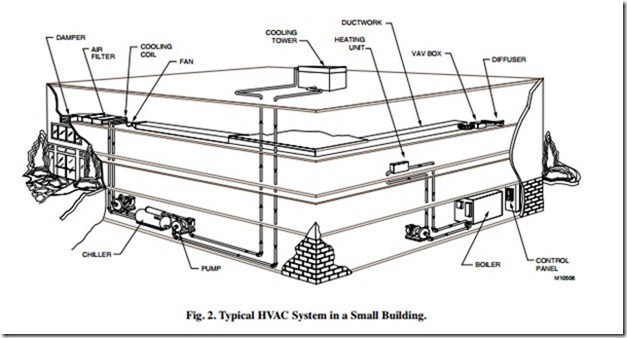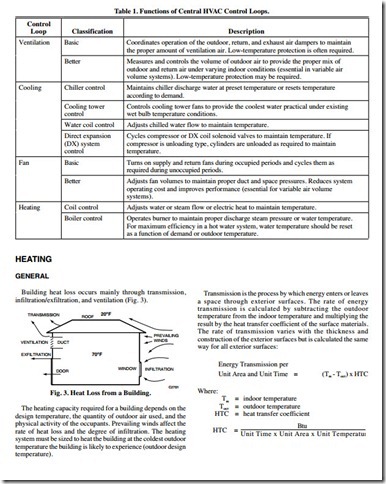HVAC SYSTEM CHARACTERISTICS
GENERAL
An HVAC system is designed according to capacity requirements, an acceptable combination of first cost and operating costs, system reliability, and available equipment space.
Figure 2 shows how an HVAC system may be distributed in a small commercial building. The system control panel, boilers, motors, pumps, and chillers are often located on the lower level. The cooling tower is typically located on the roof. Throughout the building are ductwork, fans, dampers, coils, air filters, heating units, and variable air volume (VAV) units and diffusers. Larger buildings often have separate systems for groups of floors or areas of the building.
The control system for a commercial building comprises many control loops and can be divided into central system and local- or zone-control loops. For maximum comfort and efficiency, all control loops should be tied together to share information and system commands using a building management system. Refer to the Building Management System Fundamentals section of this manual.
The basic control loops in a central air handling system can be classified as shown in Table 1.
Depending on the system, other controls may be required for optimum performance. Local or zone controls depend on the type of terminal units used.
Infiltration is the process by which outdoor air enters a building through walls, cracks around doors and windows, and open doors due to the difference between indoor and outdoor air pressures. The pressure differential is the result of temperature difference and air intake or exhaust caused by fan operation. Heat loss due to infiltration is a function of temperature difference and volume of air moved. Exfiltration is the process by which air leaves a building (e.g., through walls and cracks around doors and windows) and carries heat with it. Infiltration and exfiltration can occur at the same time.
Ventilation brings in fresh outdoor air that may require heating. As with heat loss from infiltration and exfiltration, heat loss from ventilation is a function of the temperature difference and the volume of air brought into the building or exhausted.

